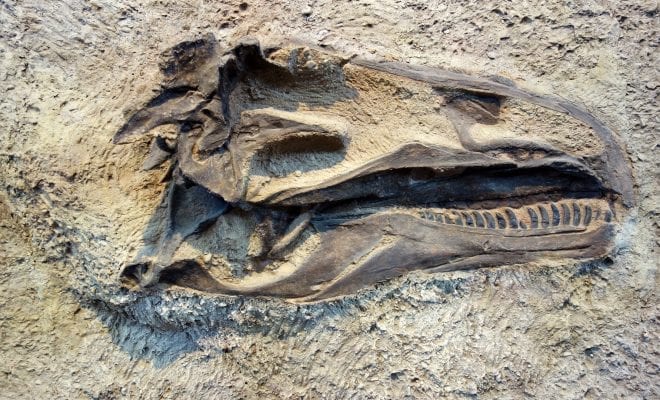
News
San Diego Researcher Discovers ‘Dancing Dragon’ Dinosaur Fossil
A breakthrough discovery is helping archaeologists connect the link between birds and dinosaurs from millions of years ago. A San Diego researcher discovered a fascinating fossil belonging to a small feathered dinosaur, complete with a long bony tail and two plumes at its end.
Researchers are calling it the Wulong bahiensis, which translates to a “dancing dragon.” Found in China’s Jehol Province, the dancing dragon existed some 120 million years ago, and is providing groundbreaking insight into our understanding of the connection between birds and dinosaurs.
The dinosaur was about the size of a large raven but double its length. While small in stature, the dinosaur had a narrow face with a mouth full of razor-sharp teeth capable of ripping its prey. Similar to a bird, it also had small, light bones and wing-like forelimbs adorned with feathers.
Ashley Poust, a postdoctoral researcher at the San Diego Natural Museum, analyzed the fossil and determined it was a never-before-seen species. Poust published the findings last week in the journal The Anatomical Record.
“The new dinosaur fits in with an incredible [range] of feathered, winged animals that are closely related to the origin of birds,” Poust, the study’s author, said. “Studying specimens like this not only shows us the sometimes surprising paths that ancient life has taken but also allows us to test ideas about how important bird characteristics, including flight, arose in the distant past.”
Poust and her team determined the dinosaur to be an early relative of Velociraptors, which lived 75 million years ago. “We’re talking about animals that lived twice as long ago as T. rex, so it’s pretty amazing how well-preserved they are,” Poust said. “It’s really very exciting to see inside these animals for the first time.”
The Jehol Province has shown to be a bountiful place for archaeologists to discover a variety of diverse fossil samples. Discoveries in the area have proven it to be a place flourishing with life millions of years ago. Through discoveries like Poust’s, we are able to continue filling in the broader picture of how life was interconnected during a truly remarkable time in the planet’s history.


0 comments